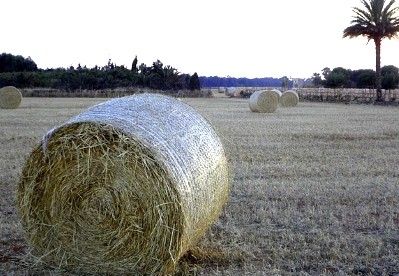Mallorca, the largest of the Balearic Islands, is not only a popular tourist destination, but also a place with a rich agricultural tradition. The fertile soils and Mediterranean climate provide ideal conditions for a wide variety of agricultural products. In this article, we take a look at the most important aspects of Mallorca’s agriculture – from traditional farming methods to modern developments.
Historical overview
Agriculture has a centuries-old tradition on Mallorca. The Romans recognized the island’s agricultural potential and introduced olive and wine growing. In the Middle Ages, the Moors introduced innovative irrigation systems that are still used in some regions today.
Traditionally, agriculture on Mallorca was based on subsistence. Farmers grew olives, wine, cereals and almonds, while keeping sheep and goats. This subsistence economy characterized the island’s rural areas until the 20th century.
See also: Economy of Mallorca as a whole
Olive cultivation: A centuries-old tradition
Olive cultivation is one of Mallorca’s trademarks. Olive trees have been growing on the terraced fields of the Tramuntana mountain range for centuries, producing the famous Mallorcan olive oil. The oil, often referred to as “liquid gold”, is now valued both on the island and internationally. The “Empeltre” and “Arbequina” varieties are particularly popular.
The traditional method of olive oil production – the cold extraction process – is still practiced on the island. Numerous old olive mills, so-called “tafonas”, bear witness to the long history of this craft.
Winegrowing: quality instead of quantity
In recent decades, Mallorca has become a renowned wine-growing region. The two most important designations of origin (DO, Denominación de Origen) on the island are “Binissalem” and “Pla i Llevant”.
Both indigenous grape varieties such as “Manto Negro” and “Callet” and international varieties such as Cabernet Sauvignon and Chardonnay are grown here. Mallorcan wines are characterized by their high quality and unique character. Many wineries open their doors to tourists and offer wine tastings, which promotes wine tourism on the island.
Almonds: the “white gold” of Mallorca
Almonds play an important role in Mallorca’s agriculture. The almond trees, which transform the landscape into a sea of white and pink, especially in February when they are in bloom, are a symbol of the island.
Mallorcan almonds are known for their high quality and are used to make marzipan, almond cake (“Gató d’Ametlla”) and almond milk. Unfortunately, almond cultivation has suffered in recent decades from competition from cheaper imports from other countries.
Citrus fruits: oranges and lemons from Soller
The valley of Soller, in the northwest of the island, is famous for its citrus fruits. Oranges and lemons from Soller are considered particularly aromatic and are harvested in large quantities on the island.
Traditionally, the fruits are also used to make jams, liqueurs and desserts. Many fincas in the region now offer guided tours of their orchards to teach tourists about the history and importance of citrus cultivation.
Vegetables and grains Mallorca: Local varieties in focus
In the plains of Mallorca, especially in the Pla region, various vegetables and grains are grown. Tomatoes, peppers, zucchini and aubergines are typical products that are often used in traditional Mallorcan cuisine.

Local grains such as “Xeixa”, an ancient type of wheat, are also currently experiencing a renaissance. This grain is increasingly used to make artisanal bread and pastries.
Animal husbandry and cheese production
Animal husbandry also plays an important role in Mallorca’s agriculture. Sheep and goats are mainly kept in the mountainous regions. Their milk is used to make traditional Mallorcan cheese, which impresses with its mild, nutty taste.
In addition to cheese, Mallorca also produces sobrasada, a spicy pork sausage that is considered a specialty of the island.
Challenges of agriculture in Mallorca
Despite the positive developments, agriculture in Mallorca faces a number of challenges:
1.Water shortage: The island’s limited water supply is one of the biggest hurdles. Efficient irrigation systems and economical use of water are therefore essential.
2.Competition from imports: Cheaper agricultural products from other countries put pressure on domestic production.
3.Urbanization: The increasing development of rural areas is putting valuable agricultural land at risk.
4.Climate change: Rising temperatures and unpredictable weather extremes are affecting the yields of many crops.
Modern developments and sustainability
In recent years, agriculture in Mallorca has increasingly focused on sustainability and organic farming methods. More and more farmers are turning to organic farming and avoiding chemical fertilizers and pesticides.
Another growing segment is agrotourism, which combines traditional farming with tourism. Many farms offer overnight accommodation and allow tourists to experience rural life on Mallorca first hand.
Conclusion
Agriculture in Mallorca has a long tradition and is an important part of the island’s culture and identity. Despite the challenges it faces, it remains a central economic sector. Through sustainable farming methods and the promotion of regional products, Mallorca’s agriculture has a promising future – both for residents and for the numerous tourists who appreciate the island’s culinary delights.
Map of Mallorca
Tilos
Leros
Kalymnos